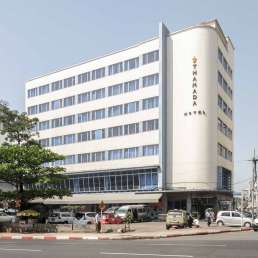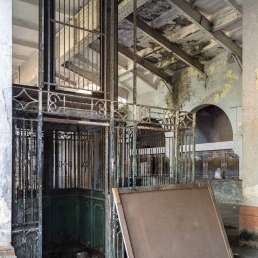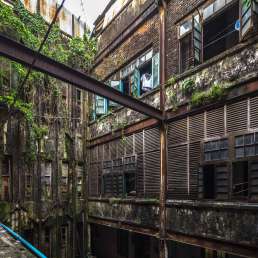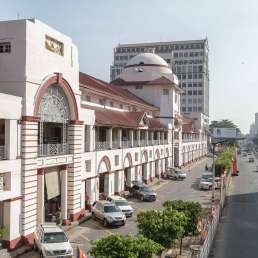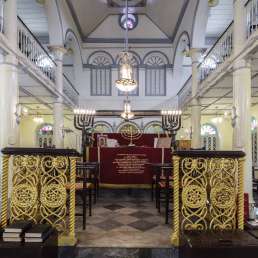Address: Sule Pagoda Road / Mahabandoola Road
Year built: 5th century BC
Architect: Unknown
After the Second Anglo–Burmese War in 1852, the British set out to develop Rangoon’s port. Lieutenant Fraser of the Bengal Engineers picked the Sule Pagoda to be the heart of the town’s new street grid. (Fraser also lent his name to nearby Fraser Street, now Anawratha Road.) At that time, the Sule Pagoda stood on an island on the swampy banks of Yangon River, connected to the town by a small wooden bridge. The British drained the shores to establish downtown Yangon as we know it. This puts into perspective the vast challenge posed by some of Yangon’s large colonial constructions. (See for example the Central Telegraph Office, the High Court or St Mary’s Cathedral for other mighty swamp-related challenges.)
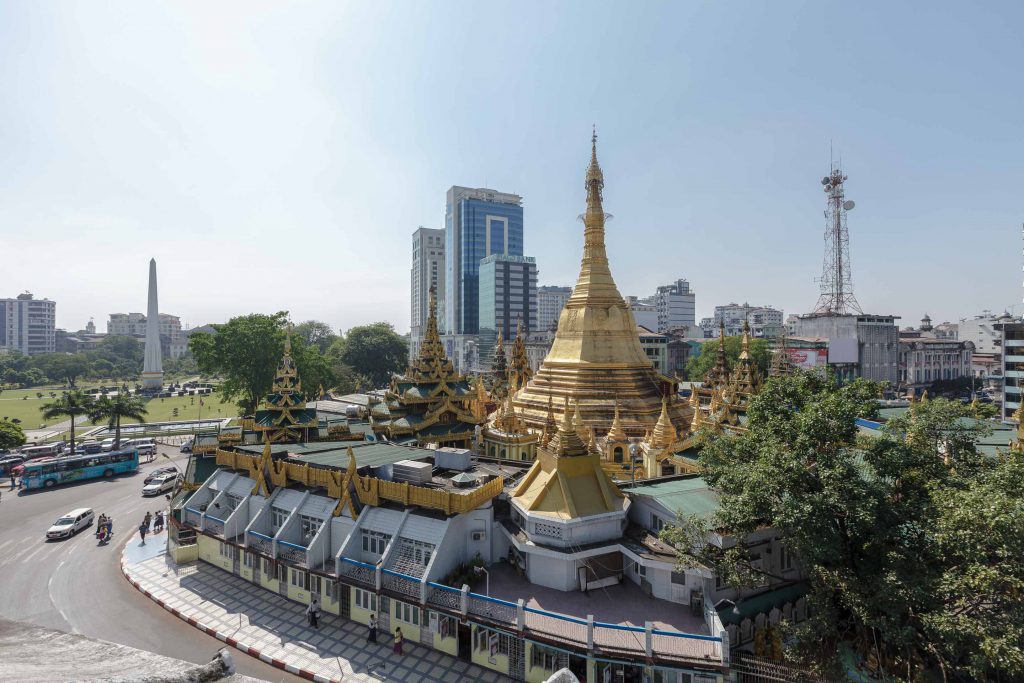
According to Buddhist adage, the Sule Pagoda’s construction dates back to the 5th century BC. However, its stupa is typical of Mon pagoda designs. The Mon spread Theravada Buddhism throughout Southeast Asia and were once among the dominant people in the region—naturally, a source of Mon pride to this day. (Now the Mon occupy Myanmar’s Mon State, whose capital is Mawlamyine, on the country’s southeastern border with Thailand. Like other ethnic armed groups inside the country, the Mon National Liberation Army still skirmishes with the Myanmar military on occasion, although a draft nationwide ceasefire was signed in April 2015.)
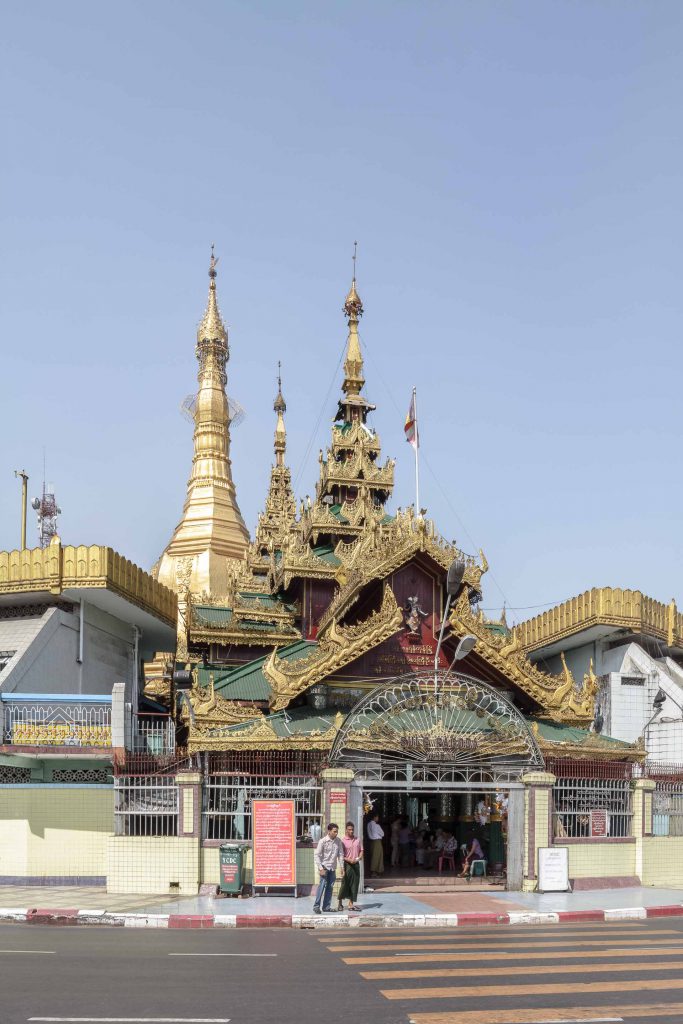
The Sule Pagoda’s Mon name is Kyaik Athok Ceti meaning “stupa where a sacred hair is enshrined”. It is said to be older than the Shwedagon Pagoda. According to legend, it also contains hairs given by the Buddha to merchants Tapussa and Bhallika. King Okkalapa—who, according to the same tale, built the Shwedagon Pagoda to host other strands of those same sacred hairs—ordered the construction of the pagoda in the same place where three previous Buddhas’ relics already lay.
The octagonal stupa has not changed since those ancient times. But today, a ring of modern construction surrounds it. And far from being an oasis of calm, the place is a scramble of shoulders and elbows, chanting and conversation. Meanwhile, Yangon’s increasingly dense traffic grinds its way along the roundabout at its feet.
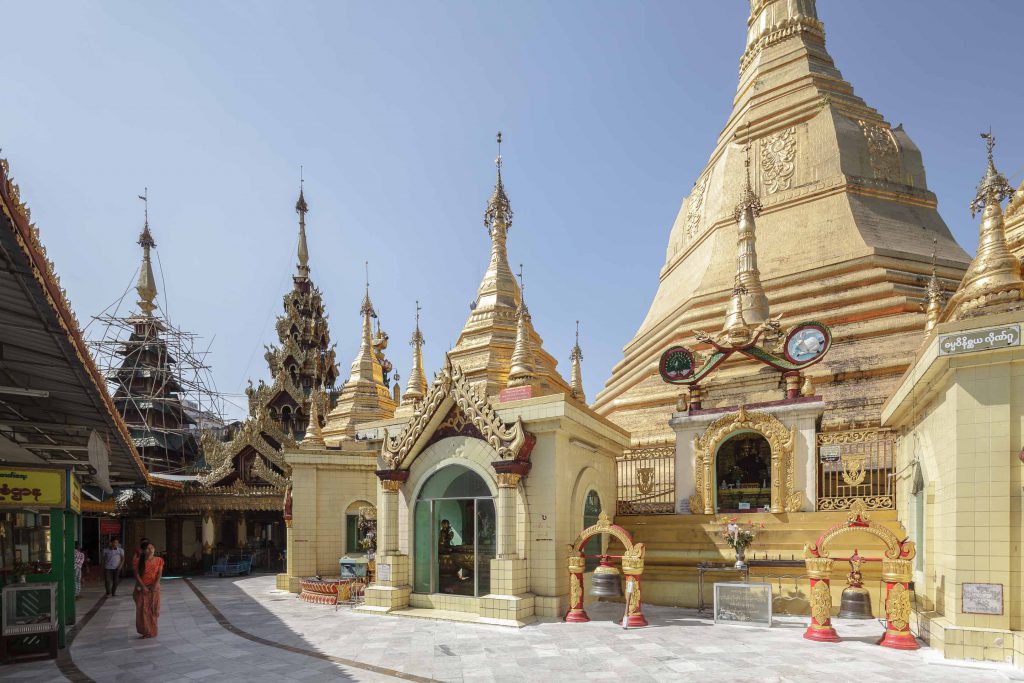
The Sule Pagoda was a frequent and practical rallying space for the country’s uprisings. Major rallies took place there in 1988. It was even more central to the 2007 Saffron Revolution. Up to 50,000 protesters and thousands of robed monks took to the streets in defiance of the regime.
Some of the photos in this section were taken from the pedestrian bridge at the intersection of Sule Pagoda Road and Anawratha Road. These bridges materialised as part of SLORC plans to redesign the city after the 1988 uprisings. (See page 332 for more details on this topic.) The regime thought soldiers could use them to fire down at protesters during future demonstrations. In an ironic twist, some of the Saffron Revolution’s most powerful images were taken from this bridge, which offers an unrivalled view of the Sule Pagoda. A Burmese journalist was on the bridge when he captured footage of a soldier killing Japanese journalist Kenji Nagai. Those images attracted international consternation. Hundreds more died from brutal military repression in these incidents.
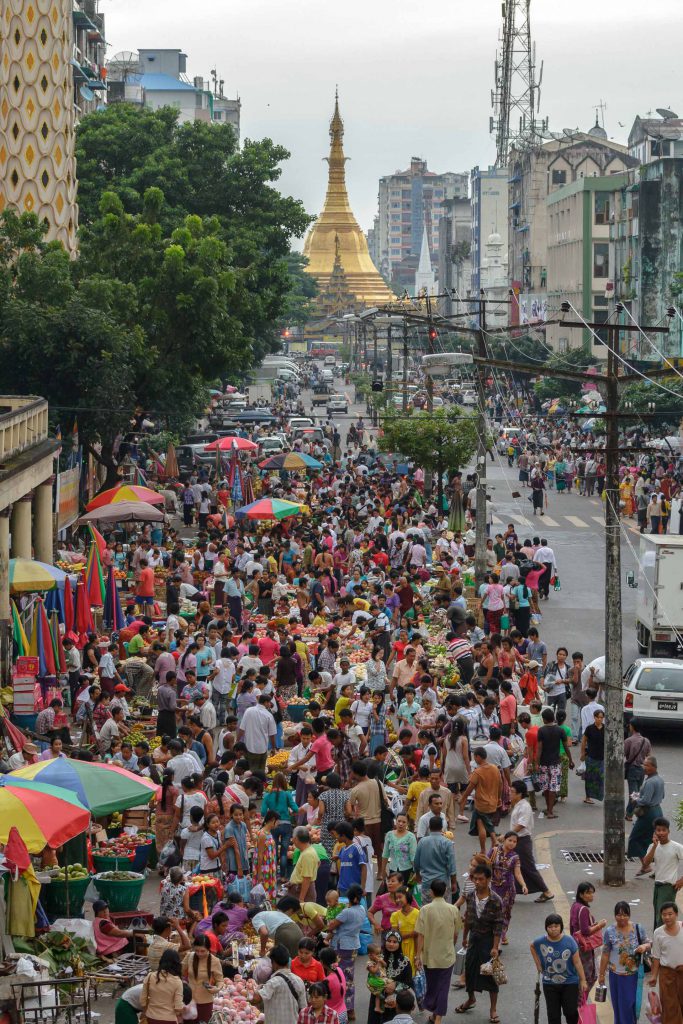
The Sule Pagoda was not always the heart of a city. For much of its existence, it lay on the shores of a quiet town surrounded by swamp water, not honking and screeching cars. The hallowed stupa has never budged of course, and invites us to reflect on the staggering change that led Yangon to what it is today.
